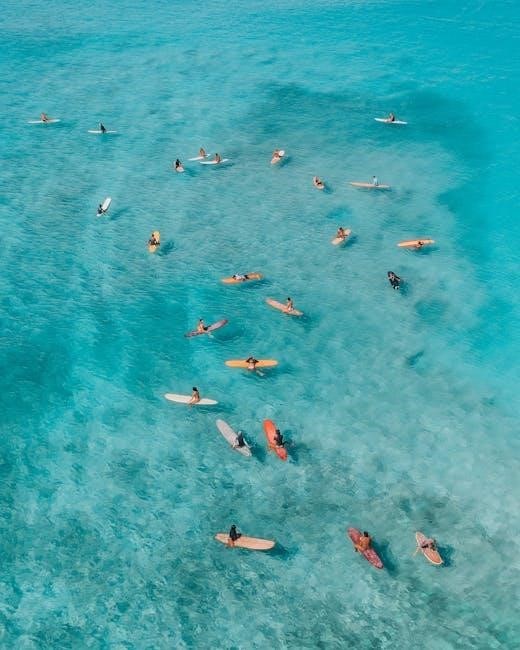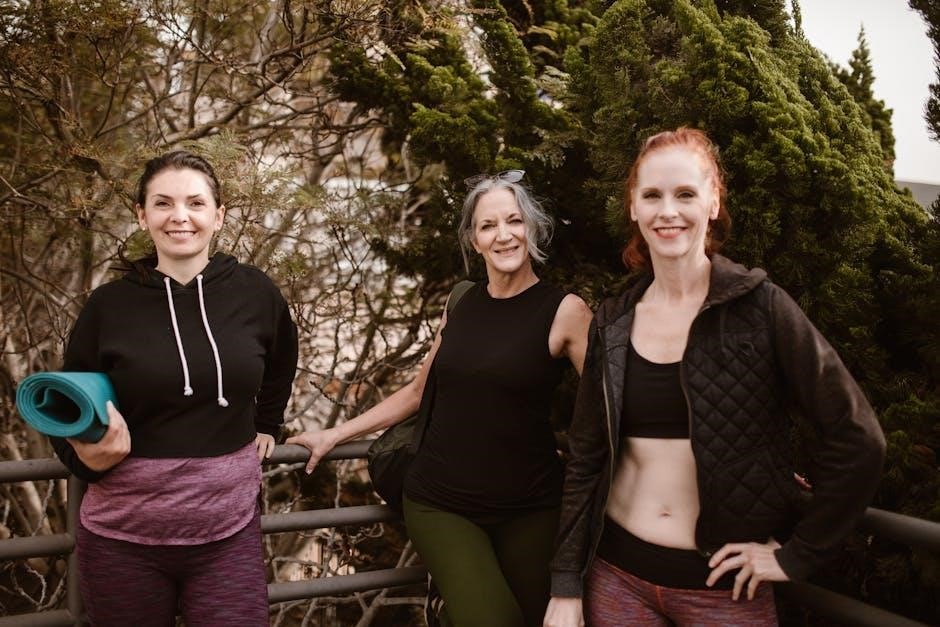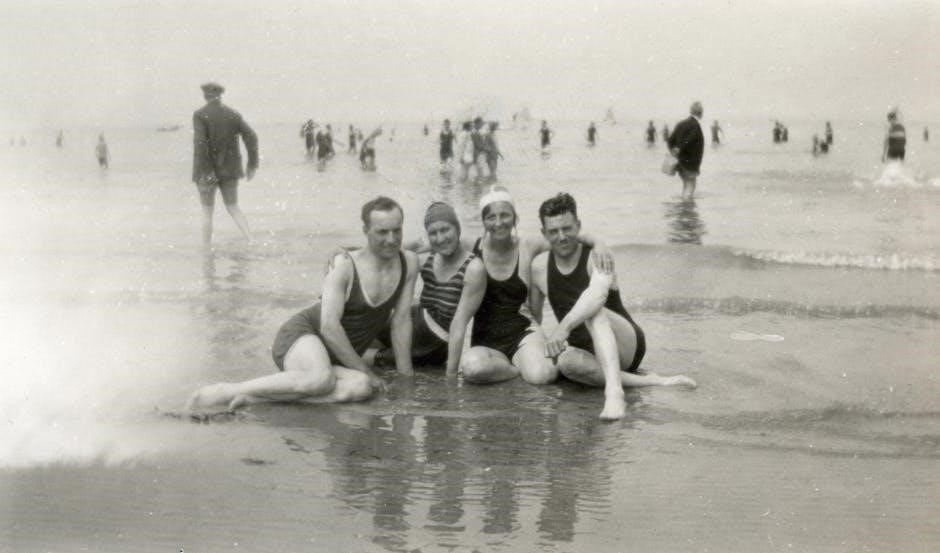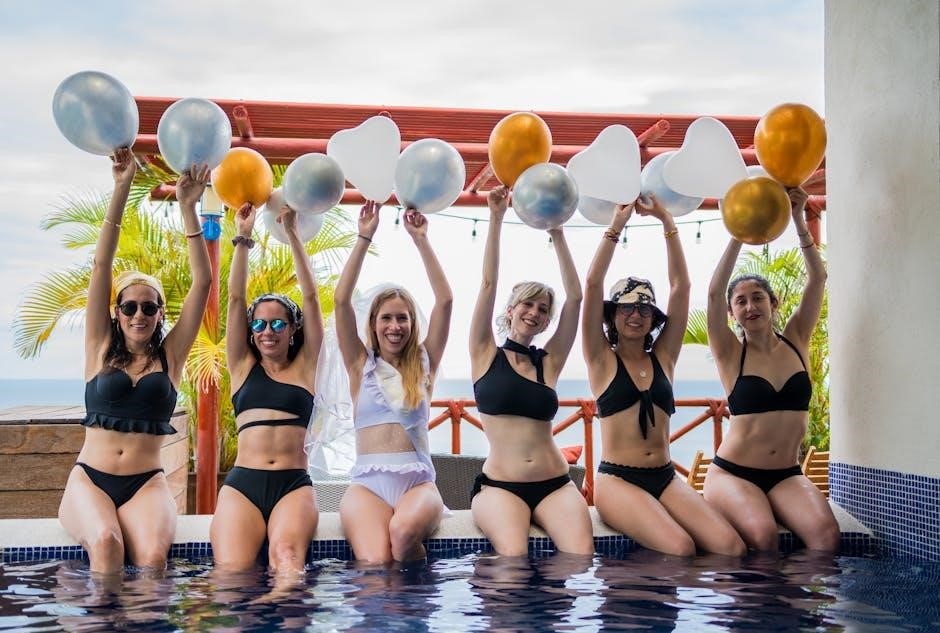age group swim workouts pdf
Age group swim workouts are designed for young swimmers, typically between 6 and 18 years old, to improve technique and build endurance through structured
- lessons
and activities.
Overview of Age Group Swim Workouts
Age group swim workouts are categorized by age and skill level, providing a framework for coaches to develop training programs. The workouts are designed to be progressive, allowing swimmers to build on previously learned skills and techniques. A typical age group swim workout includes a combination of drills, swims, and kicking exercises, all aimed at improving technique, endurance, and overall performance. The workouts are often structured to include a warm-up, followed by a series of drills and swims, and finishing with a cool-down. The specific components and objectives of the workouts vary depending on the age and skill level of the swimmers, but the overall goal is to provide a comprehensive and well-rounded training program. By following a structured workout program, age group swimmers can improve their skills, increase their confidence, and achieve their goals in the pool, with the help of
- experienced coaches
and
- training plans.

Components of an Age Group Workout
Workouts include drills, swims, and kicks, with
- specific goals
and objectives for each component daily.
Objectives of an Age Group Workout
The primary objectives of an age group workout are to improve swimming technique, increase endurance, and enhance overall performance. These objectives are achieved through a combination of drills, swims, and kicks, with specific goals and targets for each component. The workouts are designed to be challenging yet fun, with a focus on developing the skills and confidence of young swimmers. By setting clear objectives, coaches can create a structured and effective training program that helps swimmers progress and achieve their goals. The objectives of an age group workout may vary depending on the age and skill level of the swimmers, but the overall aim is to provide a supportive and motivating environment that fosters a love of swimming and promotes long-term development. This approach enables swimmers to reach their full potential and enjoy the many benefits of swimming.
Workout Planning for Age Groups
Coaches use periodized planning to create effective workout plans for age groups, incorporating various
- exercises
and drills.
Season Planning for Age Group Workouts
Season planning for age group workouts involves creating a structured plan that outlines the team’s goals and objectives for the upcoming season, using a combination of
- short-term
and long-term plans. This plan typically includes a series of
- phases
, each with its own specific focus, such as technique development, endurance building, and tapering. Coaches use this plan to guide their workout planning, ensuring that their athletes are properly prepared for competitions and meets. The plan also takes into account the team’s strengths and weaknesses, as well as the athletes’ individual needs and goals. By having a well-structured season plan, coaches can help their athletes achieve their full potential and reach their goals, while also promoting a positive and supportive team environment, with regular
progress updates
and evaluations. Effective season planning is essential for a successful age group swim team.

Sample Age Group Workouts
Workouts include drills and sets, using
- various
strokes and techniques to improve skills and endurance levels gradually.
Workout 1: 12 x 25 Freestyle Long Axis Drills
This workout is designed to focus on the long axis of the body, with an emphasis on freestyle drills to improve technique and efficiency. The 12 x 25 freestyle long axis drills are structured to allow swimmers to practice their stroke, working on maintaining a straight line from head to heels. The use of drills such as the long axis drill helps to develop a strong and consistent kick, as well as a powerful pull. By incorporating this workout into their training, swimmers can improve their overall freestyle technique, increase their endurance, and develop a stronger sense of body position in the water. The drills can be modified to suit different age groups and skill levels, making it a versatile and effective workout for age group swimmers. This workout is typically followed by a swim set to reinforce the skills practiced during the drills.

Drills for Age Group Workouts
Drills improve technique and efficiency for age group swimmers using various
- exercises
and activities daily.
One-Arm Drills for Age Group Swimmers
One-arm drills are essential for age group swimmers to improve their technique and overall performance in the water. These drills involve using one arm to swim while keeping the other arm still, allowing swimmers to focus on their arm movement and stroke. The non-swimming arm should be at the side, with the head back and still, to maintain a stable body position. By practicing one-arm drills, age group swimmers can develop a stronger and more efficient stroke, which is critical for competing at higher levels. Additionally, these drills can help swimmers identify and correct any flaws in their technique, making them a valuable tool for coaches and swimmers alike. With regular practice, one-arm drills can help age group swimmers take their swimming to the next level and achieve their goals in the pool. Using
- videos
and guides can enhance learning.
Kicking Drills for Age Group Workouts
Kicking drills improve leg strength using
- kickboards
and fins effectively always.
Backstroke and Breaststroke Kick Drills
Backstroke and breaststroke kick drills are essential for age group swimmers to master, as they help improve technique and build endurance. These drills can be modified to suit different age groups and skill levels. For backstroke, kick drills such as the alternating kick and the whip kick are effective. For breaststroke, the frog kick and the whip kick are commonly used. The use of kickboards and fins can also enhance the effectiveness of these drills. By incorporating these drills into their workouts, age group swimmers can improve their overall performance and reduce their risk of injury. Additionally, coaches can use these drills to identify areas for improvement and provide targeted feedback to their swimmers. With consistent practice and dedication, age group swimmers can develop strong and efficient kicking techniques. This will enable them to swim faster and more efficiently. Regular practice is necessary.

Coaching Age Group Swimmers
Coaches use various methods and techniques to train age group swimmers effectively every day.
Managing Large Teams with Limited Time
Managing large teams with limited time requires careful planning and organization to ensure all swimmers receive adequate attention and training. Coaches can divide teams into smaller groups, focusing on specific skills or strokes, and utilize assistant coaches or volunteers to help with supervision and instruction. Effective time management is crucial, with coaches prioritizing drills and exercises that maximize skill development and minimize wasted time. By streamlining practices and making the most of available time, coaches can help their swimmers improve despite the challenges of large teams and limited practice time. This approach enables coaches to provide personalized feedback and guidance, even in busy and fast-paced practice environments, ultimately leading to better outcomes for their swimmers. Coaches must be adaptable and able to adjust their plans as needed to accommodate the unique needs of their team.
